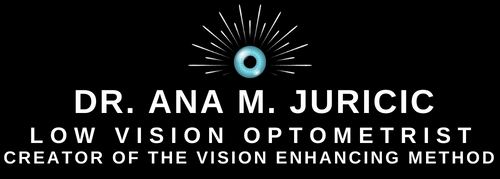Often I hear from my patients living with vision loss that their family or friends don’t understand what they may be going through. This is especially true when someone is experiencing more recent vision loss or a sudden change in their vision.
By actively offering assistance, you contribute to breaking down the barriers faced by individuals with low vision. Your support promotes inclusivity, understanding, and equality, fostering a more inclusive society that values and accommodates people of all abilities.
Not all people with vision loss feel comfortable with sharing that they are having difficulty seeing. This I find especially true for my many patients who have developed age related macular degeneration (AMD) later in life.
Most people with vision loss don’t’ show any signs that they are having difficulty with their vision by just looking at them. The general perception is that a person who is visually impaired or blind uses a guide dog or a white cane.
The fact is that only 2-8% of people living with vision loss use a white cane and according to Canadian Guide Dogs for the Blind, only 2% use a guide dog
Reference here
If you are living with vision loss or know someone who lives with vision loss, the following list was created so it can be shared with family, friends, co-workers, and colleagues.
There are many ways to help and offer assistance to someone who is visually impaired, depending on their needs and preferences. Some general tips are:
- Ask before you help: Don’t assume that someone with visual impairment needs your assistance. Always ask them if they need any help and how you can help them. Respect their wishes and follow their instructions.
- Introduce yourself and others: When you meet someone with visual impairment, say your name and their name if you know it. If you are with other people, introduce them as well. When you leave, let them know that you are leaving.
- Speak normally and clearly: Don’t shout or exaggerate your speech when talking to someone with visual impairment. Speak in a normal tone and pace, and use clear and simple language. Avoid pointing or using gestures that they may not see.

- Offer your arm or shoulder: If someone with visual impairment needs guidance, offer them your arm or shoulder to hold on to. Don’t grab or pull them. Let them set the pace and direction. Warn them of any obstacles, steps, or changes in the terrain ahead.
- Describe the surroundings: If someone with visual impairment asks you to describe the environment, give them relevant and specific information. For example, tell them the number and location of doors, windows, furniture, people, etc. Use clock directions or left/right cues to orient them.
- Be respectful and supportive: Don’t pity or patronize someone with a visual impairment. Treat them as an equals and respect their dignity and independence. Encourage them to pursue their goals and interests. Listen to their concerns and offer emotional support if needed.
Remember to always approach individuals with respect, ask for their preferences and needs, and be responsive to their requests. Each person is unique, and understanding their individual requirements is essential for providing the most appropriate and effective assistance.



